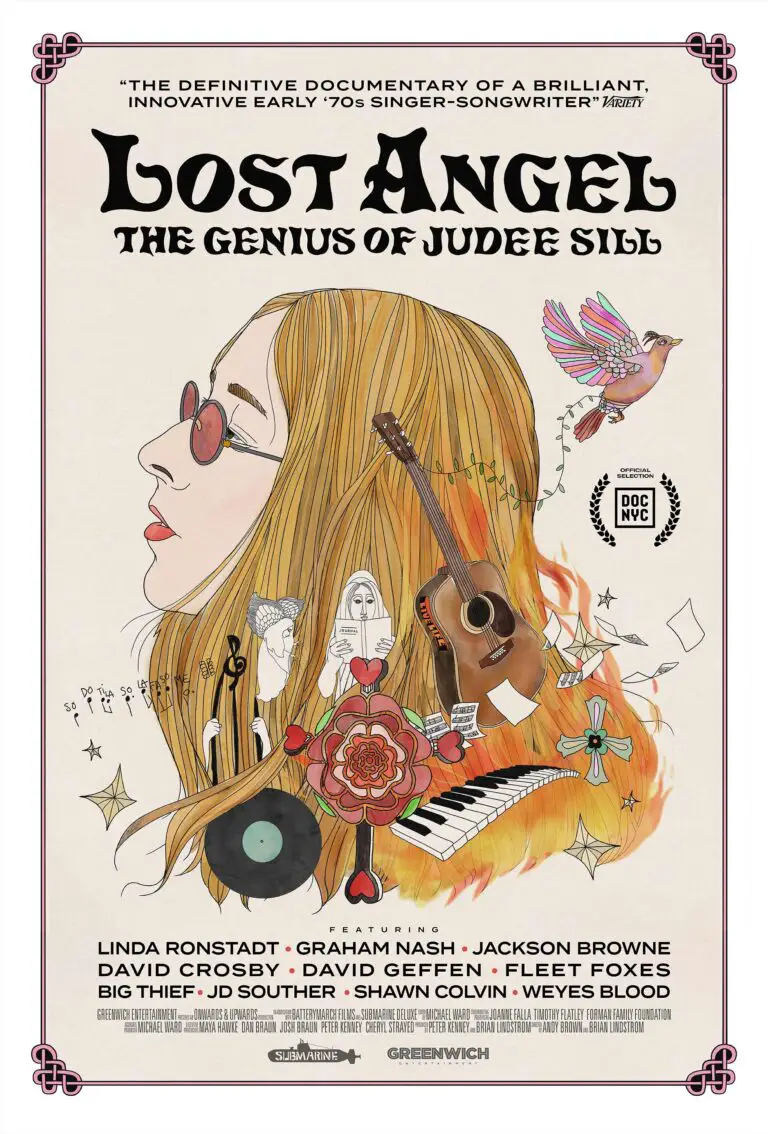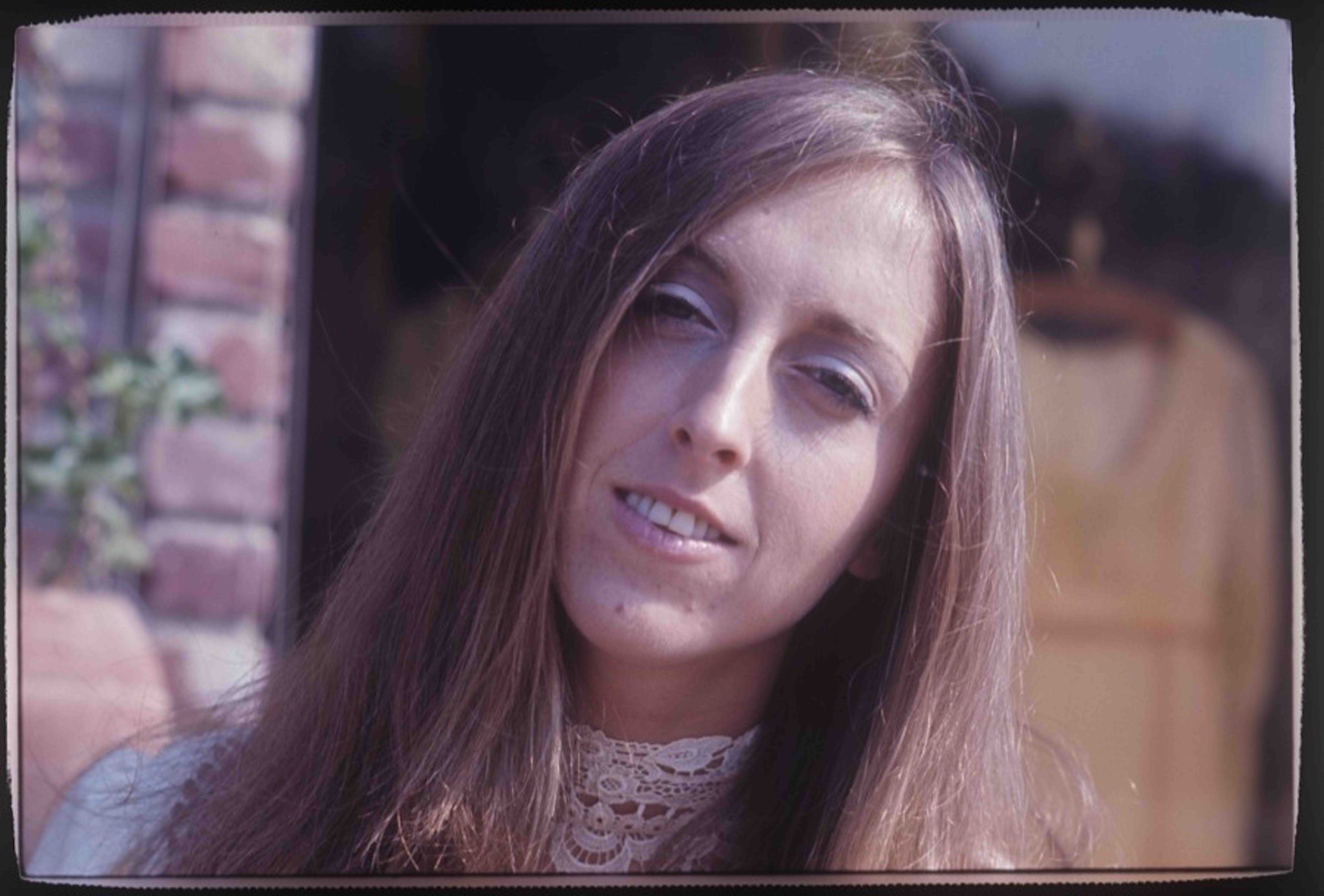She was one of the greatest “misses” of the 1970s – a singer-songwriter of lyrical and musical depth who led a life more tragic than anything conjured by Tolstoy. Now, 45 years after her passing, she is revealed and righteously revered in a powerful new documentary from co-directors Andy Brown and Brian Lindstrom, Lost Angel: The Genius of Judee Sill (Greenwich Entertainment).

While there are many wonderful interviews with her contemporaries like Linda Ronstadt, Graham Nash and Jackson Browne and performances of her songs by Fleet Foxes and more, this documentary is very much a first-person autobiography. The most powerful voice telling Sill’s story here is her own. It comes in audio clips from recently unearthed interviews and heartbreaking passages from her journals read by Sonya Goddy.
Sill’s story begins and ends in hardship, interrupted by a brief two-year window when she was poised to be “the next big thing” in the burgeoning singer-songwriter genre. She would be one of the first signings to David Geffen’s powerhouse Asylum Records, the home of platinum-selling artists like Jackson Browne, Joni Mitchell, Linda Ronstadt and The Eagles.
Sill would begin tickling the ivories at the piano in her father’s bar at age three. By her teen years, her life went south when she became involved with petty theft and addiction, which sent to a reform school. While there, she fell in love with playing the church organ and gospel music. In 1968, while in prison on fraud and prostitution charges, she realized that if she could endure the agony of kicking heroin cold turkey in the clink, she could do anything. She decided to become a singer-songwriter and marked this commitment with a jailhouse tattoo of a treble clef on her shoulder. She would continue her struggles after prison, working as a jazz bass player in a piano bar and developing a 15 – 20 bag a day heroin habit, before finally getting clean. Within a few short years, she went from living in a car to being the subject of cover story on Rolling Stone Magazine.

Her songwriting career began when she secured a $65 a week job writing songs after scoring her first major achievement penning “Lady-O” for The Turtles. While playing open mic nights at the legendary Troubadour in Los Angeles, she would come to the attention of songwriter and boyfriend-to-be JD Souther. He and other in that tight circle of musicians who would sing her praises to Geffen. Her unique fusion of country jazz and baroque stylings, and her songs uniquely anchored on Bach bass movements, would secure her a record deal and heavy promotion for her eponymous 1971 debut album.
Unlike some artists who play it humble, Sill unabashedly proclaimed: “I really want to be a star” in interviews. Her debut album included the classic “Jesus Was A Cross Maker.” It was a tune based on her turbulent relationship with Souther who, by then, was dating Linda Ronstadt. A faithful friend to the end, Ronstadt provides some of the most pertinent observations in this film about Sill’s massive talent and her inability to cope and roll with disappointments in her career. Sill’s follow-up album, 1973’s Heart Food, would also garner continued critical accolades but even more disappointing sales. It would include the incredible “The Kiss,” a song that is called representative of her “amazing, universal force.” It is a ballad that, like many of her works, is a representation of “a sensual experience with God” according to Big Thief’s Buck Meek.
“She didn’t play the game well and was terrible at kissing ass,” adds JD Souther. “Part of her bitterness was that she knew how good she was.” Another reason for her lack of success may have been cosmetic – that she didn’t possess the physical beauty of contemporaries like Joni Mitchell.

In frustration at her lack of success, and especially in light of the soaring careers of label mates like Ronstadt and Mitchell, Sill would lash out at Geffen, reportedly calling him “a fag” from the stage. “She went to battle with Geffen and lost” adds another musician. She would be dropped from his label, beg for forgiveness that wouldn’t come and spiral down from there.
A car accident would severely compromise her health. It would lead to two spinal fusion surgeries, constant pain and, once again, a dependence on drugs. She would pass away in October 1979 due to an overdose which was officially ruled a suicide. It’s a conclusion doubted by many of her friends and collaborators.
With all of the agony, this film really is more about the pure ecstasy of Sill’s talent and music. The documentary’s directors do a wonderful job presenting her music, with clips of her performances on BBC’s Old Grey Whistle Test and at a low-key lunchtime gig on University of Southern California campus. There are also some great covers including “The Kiss” by Fleet Foxes and “The Phoenix” by Shawn Colvin. Her impact on a new generation of artists is related in interviews with luminaries like Big Thief’s Buck Meek and Adrianne Lenker and Weyes Blood.
Do yourself a favor and see this film now streaming on Amazon and Apple TV or in a theater near you.


Comments are closed.